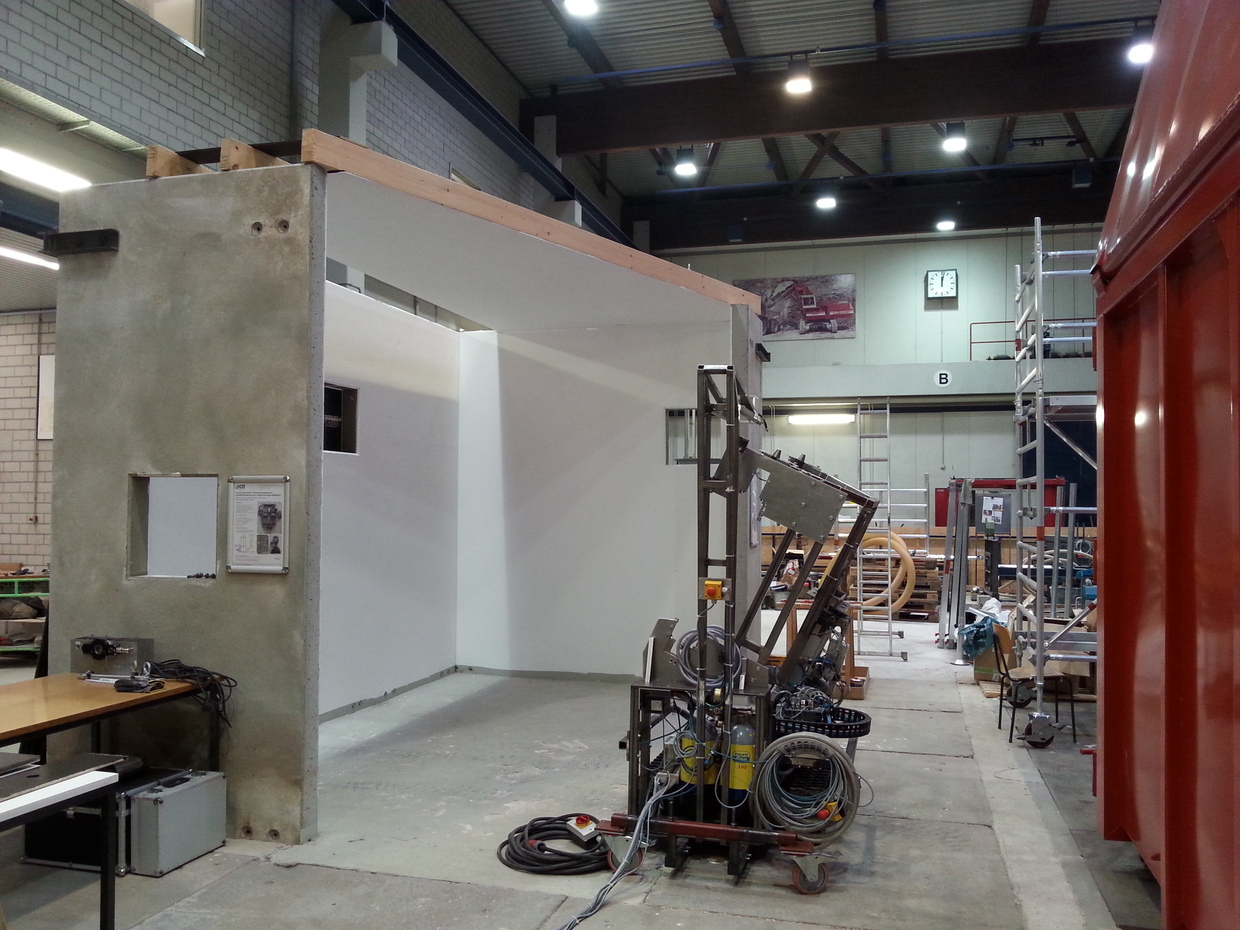KIT establishes Competence Center for Decommissioning

The MAFRO system autonomously measures radioactive contamination of surfaces, decontaminates, and measures again for the release of the surface. (Photo: Patrick Kern, KIT)
Safe decommissioning of nuclear facilities is one element of the transformation of the energy system in Germany, the so-called Energiewende. It represents a big challenge for science, technology, and industry. Karlsruhe Institute of Technology (KIT) therefore establishes a Competence Center for Decommissioning in order to secure the existing specialized know-how relating to the decommissioning of nuclear facilities and to deepen this knowledge in an application-specific manner. Apart from innovative dismantling technologies, radiological characterization of contaminated plant components, decontamination, radiation protection, management of complex processes, and interdisciplinary technology assessment are among the central activities.
Not only in Germany, also on the European level and worldwide, a big demand for competences relating to the safe decommissioning of nuclear facilities is to be expected in the future. This will also include the safe disposal of the radioactive wastes produced. According to the European Commission, about one third of the presently operating 145 nuclear power plants will be shut down by 2025. Hence, it is not only important to enhance existing know-how, but also to train young scientists and engineers for executing this work in the medium and long term. The KIT Competence Center for Decommissioning is part of the Nuclear Waste Management, Safety and Radiation Research Helmholtz Programme (NUSAFE). Twelve division heads of KIT and their teams are involved in the Center.
Decommissioning of nuclear facilities covers various aspects, for which vast competences exist at KIT. The expertise covers dismantling strategies according to the legal framework conditions, dismantling technologies, decommissioning management, decontamination and conditioning technologies, protection of the staff, population, and the environment against radiation exposure, analysis of political and societal conditions, as well as strategies for the appropriate participation and information of the public.
“The KIT Competence Center for Decommissioning can rely on comprehensive expertise and a highly performing infrastructure,” Dr. Walter Tromm, spokesperson of the KIT NUSAFE Programme and of the topic of nuclear energy and safety within the KIT Energy Center, says. “Hence, it offers ideal conditions for a sustainable qualification and training of young engineers.” Professor Sascha Gentes, holder of the Chair for Decommissioning of Conventional and Nuclear Facilities (TMRK) of the KIT Institute for Technology and Management in Construction (TMB) will set up the new Competence Center: “Decommissioning methods have to be specially adapted to each project and optimized,” Gentes explains. “The Competence Center is planned to scientifically and technically process and supply standardized solutions and methods.”
An optimal decontamination strategy requires detailed knowledge of the type of radionuclides, their distribution in components, and their chemical binding state. Hence, examination and comprehensive characterization of real radioactive samples are indispensable. The KIT Institute for Nuclear Waste Disposal (INE) is equipped with appropriate facilities.
The research portfolio of the Competence Center for Decommissioning will be extended and complemented in a stepwise manner in order to allow for a holistic research approach. Apart from technical and engineering aspects, natural sciences as well as sociopolitical, legal, medical, and ecological issues will be considered. As early as in 2008, the professorship for decommissioning of conventional and nuclear facilities was established at KIT, which is the only one of this type in Germany. In this way, interested students are given the opportunity to attend lectures and seminars and to qualify in this area. A complete lecture module on “Decommissioning of Nuclear Facilities” is offered. In addition, the AREVA Nuclear Professional School of KIT offers a training program on decommissioning. The Competence Center will also cooperate with other universities, research institutions, and industry partners.
Within a radius of about 60 km around the KIT, all nuclear power plants in Baden-Württemberg are located, namely, Philippsburg 1 and 2, Neckarwestheim 1 and 2, and Obrigheim. Of these, only Philippsburg 2 and Neckarwestheim 2 are still in operation.
Being „The Research University in the Helmholtz Association“, KIT creates and imparts knowledge for the society and the environment. It is the objective to make significant contributions to the global challenges in the fields of energy, mobility and information. For this, about 9,300 employees cooperate in a broad range of disciplines in natural sciences, engineering sciences, economics, and the humanities and social sciences. KIT prepares its 26,000 students for responsible tasks in society, industry, and science by offering research-based study programs. Innovation efforts at KIT build a bridge between important scientific findings and their application for the benefit of society, economic prosperity, and the preservation of our natural basis of life.
